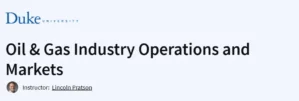What will you learn in this Machine Design Part I Course
Analyze and predict mechanical component performance under static and dynamic loading.
Apply static failure theories, including von Mises and Coulomb-Mohr, to prevent structural failures.
Evaluate fatigue failure criteria using SN curves, endurance limits, and Miner’s Rule.
Understand material properties such as modulus of elasticity and thermal expansion in design contexts.
Utilize real-world case studies to connect theoretical concepts with practical engineering applications.
Program Overview
1. Material Properties in Design
⏳ 3 hours
Explore fundamental material properties like strength, modulus of elasticity, and thermal expansion. A case study on hip implant material selection illustrates practical applications.
2. Static Failure Theories – Part I
⏳ 6 hours
Review stress analysis concepts, including axial, torsional, bending, and shear stresses. Reinforce learning through targeted worksheets.
3. Static Failure Theories – Part II
⏳ 7 hours
Delve into stress concentration factors and failure theories such as Distortion Energy and Brittle Coulomb-Mohr. Analyze the Boeing 777 wing design as a case study.
4. Fatigue Failure – Part I
⏳ 6 hours
Introduce fatigue principles, focusing on SN curves and endurance limits. Examine the Aloha Airlines Flight 243 incident to understand fatigue failure implications.
5. Fatigue Failure – Part II
⏳ 8 hours
Study fatigue under fluctuating stresses using Goodman diagrams and Miner’s Rule. Conclude with a comprehensive quiz to assess overall understanding.
Get certificate
Job Outlook
Prepares learners for roles such as Mechanical Design Engineer, Structural Analyst, and Product Development Engineer.
Applicable in industries like aerospace, automotive, biomedical devices, and heavy machinery.
Enhances employability by providing practical skills in mechanical design and failure analysis.
Supports career advancement in fields requiring expertise in material selection and fatigue analysis.
Specification: Machine Design Part I
|




